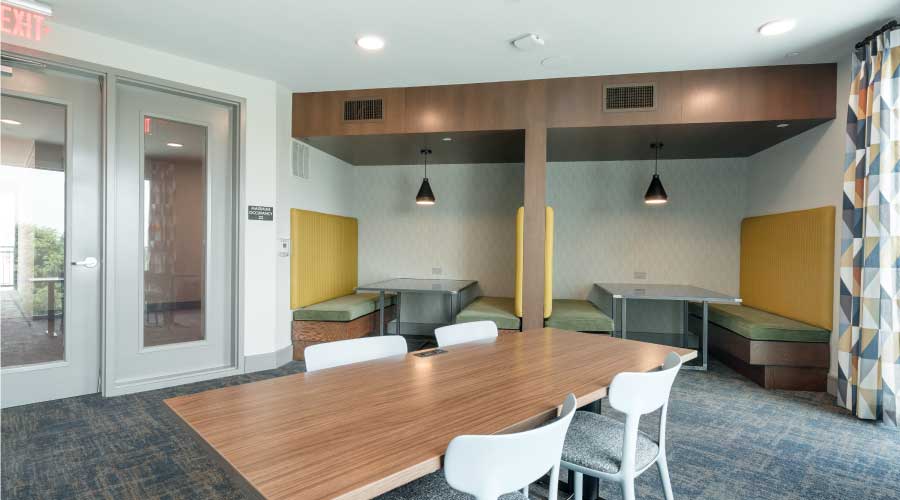Looking Ahead to Future Security Scenarios
Understanding possible best- and worst-case security scenarios can help facilities managers begin planning now to mitigate disruption.
It’s impossible to predict when and to what extent a change in technology will cause disruption. But as building owners focus on making buildings more resilient — creating operating procedures, developing capital plans for system upgrades in existing buildings, and beginning the design of new facilities — it’s important to begin thinking about impacts of disruptions that will occur in the future. The following scenarios provide a general sense about how and when disruptions might hit, and what some best- and worst-case scenarios might be.
Let’s start with the long term and move closer to the present:
• 2040 to 2050: Within 20 to 30 years, quantum computing will become a reality, and all forms of building electronics, Building Internet of Things devices, and building communications will need new forms of encryption to resist these powerful machines. For example, quantum computing will make it possible to take over phones, listen to conversations, remotely activate cameras, skim data/encryption used for passwords, or propagate malicious code in a way analogous to the spread of the common cold.
From the cloud, artificial intelligence systems will remotely manage hundreds of buildings and security systems, including robotics, intrusions systems, and countermeasures. Artificial intelligence offers an opportunity to analyze thousands of data points and render opinions on whether any of them represent a threat, something humans will never be able to do. For example, a person sketching a building from the outside will be identified as a threat because of the time when the sketch occurred, how long they were on-site, and what else they did on-site. These systems will be able to identify in real-time a fire, muzzle flashes, weapons, armed assailants, and other emergencies, autonomously communicating and directing first responders and building occupants as a human would.
• 2025 to 2030: Within 5 to 10 years, we will see the advance of fully autonomous trucks and vehicles. Remote hackers will gain access and use these vehicles as battering rams against large groups of civilians. Security will use autonomous vehicles to patrol parking lots, using high-definition cameras to capture suspicious vehicles and persons, with two-way cellular 8G communication between operators and potential offenders. As advanced technology brings lighter weight, more powerful batteries, single-seater, personal aircraft will be developed to operate at specific heights and ferry prominent people back and forth from their homes or remote meetings. Concerns about hacking these vehicles will emerge as a result of the previously successful hacks of autonomous vehicles.
• 2023 to 2025: Regrettably, within three to five years, we will likely see a drone attack at a commercial property, likely one with a transportation element or where many people are gathered. This will be a result of the availability of information (DarkNet, etc.), tools, and resources (3D printing), and the simplicity of the device’s construction and deployment.
Meanwhile, the security guard industry will undergo significant changes. Leased mobile quad-ped (four-footed) robotic officers will become economically viable and will eliminate human exterior and stairwell patrols. Motorized wheeled robotics will support concierge efforts in lobbies, check in visitors, and patrol building interiors through the integration with elevator destination dispatch systems. Buildings that once required five or six security staff per shift per building will rely on an army of sleepless robots, which will tour stairs, patrol emergency stairs, look for fires and water leaks, document burned out luminaires and hazardous conditions, and be summoned by central station operators to intrusions.
• 2021 to 2022: In one to two years, as mobile technologies continue to advance, they will replace passwords and access control cards, which will make it much easier for social engineers to gain access to buildings. Mobile technologies will use GPS and indoor positioning for emergency response and virtual walks, and to serve as call-for-assistance devices. Mobile devices will become visor-like, leveraging augmented reality to drive additional information both audibly and visually instantaneously.
The first virus that is polymorphic and metamorphic, as well as operating-system-agnostic, will replicate via mobile phone, Bluetooth, and Wi-FI connections through trusted machines. The virus will replicate quickly and use cloud-based machine learning to create connections with other mobile devices and other wireless connections. Wait, that already kind of happened – it was researchers who created and published the Blueborne exploit that was quietly patched.
Related Topics:














